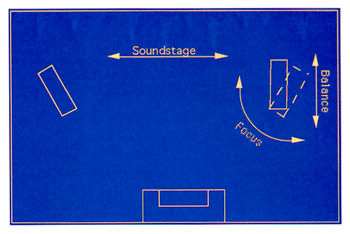| Columns Retired Columns & Blogs |
WHEN WE TALK ABOUT THE PLACE OF THE SPEAKER IS VERY COMPLICATE BECAUSE IN EVERY CASE IS DIFRENT IF YOU BUY NEW ALWAYS COME WITH THE USER MANUAL BUT IN MY CASE NEVER USE YOU HAVE TO FIND AND CHANGE THE SPEAKER IN DIFRENT PLACES AND FIND THE BEST PLACE FOR EVERY BRAND,I HAVE TO SAY AUDIO IS MY HOBBY ALL MY LIFE AND WE LOOK FOR THE BEST SOUND,AND PLACE THE SPEAKER WHERE SOUND IS BEST
BEST REGARD
EDUARDO






















